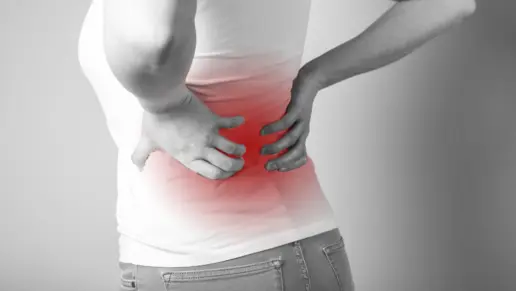What Is Oxycodone?
Oxycodone is a semi-synthetic narcotic analgesic prescribed for moderate to severe acute and chronic pain including physical pain from injury, surgery, cancer and other medical issues. It was developed in 1916 by German researchers and comes from thebaine, a minor constituent of opium. Like other opiates, Oxycodone abuse is common due to it’s effects.
This narcotic acts on the central nervous system to relieve pain. Oxycodone is one of the main ingredients in the commonly prescribed pain medications Percocet and Oxycontin.
Side Effects and Risks of Oxycodone Use
While oxycodone has proven to be a beneficial medication in terms of treating pain, the use of this medication is not without risk.
All medications have the potential for side effects. The possible oxycodone side effects include:
- Constipation
- Respiratory sedation
- Nausea, vomiting, heartburn, hiccups, dry mouth
- Lack or loss of strength
- Sleep disturbances such as abnormal dreams or insomnia
- Sedation and dizziness
- Depression
- Confusion
- Difficulty with urination and decreased urine output
- Changes in heart rate and
- Hives, itching or skin rash
- Low levels of testosterone that can result in lower sex drive, energy and strength
- Physical dependence- meaning you have symptoms of withdrawal when the medication is stopped
- Tolerance- You might need to take more of the medication for the same pain relief
- Increased sensitivity to pain.
Oxycodone affects your central nervous system by altering the way your brain and nervous system respond to pain. It creates a mild sense of euphoria by triggering a release of the neurotransmitter dopamine, creating a high potential for misuse and addiction.
Street names for oxycodone include Hillbilly Heroin, Kicker, OC, OX, Roxy, Percs and Oxy. It is frequently abused by crushing the pills and then snorting the powder or dissolving it in water and injecting the substance intravenously. Some individuals may heat the tablet in foil and inhale the vapors.
Oxycodone FAQs
What is the difference between hydrocodone and oxycodone?
In terms of hydrocodone vs oxycodone, both medications are considered opioids but they are derived from different sources. Hydrocodone comes from codeine while oxycodone is a thebaine derivative. Both are effective pain medications but oxycodone is considered to be more potent than hydrocodone and has a higher potential for abuse.
How long does oxycodone stay in your system?
Generally, oxycodone will show up in urine drug tests for one to three days after previous use. It is detectable for up to 36 hours in a saliva test, three to six hours on a blood test or 90 days on hair follicle tests.
Factors including age, the formulation of the drug, genetics, kidney and liver health and weight may impact the rate of metabolism resulting in different clearance times from individual to individual.
What’s the difference between tramadol and oxycodone?
Both medications are prescribed to help alleviate moderate to severe pain. Tramadol is classified as a Schedule IV medication under the Controlled Substances Act and is considered a weaker opioid when compared to oxycodone, which is regarded as a Schedule ll medication.
Unlike oxycodone, tramadol also affects serotonin and norepinephrine which are two neurotransmitters that impact mood regulation, sleep, memory and learning. Both drugs have similar side effects such as constipation, dry mouth, headache and drowsiness.
Tramadol impacts serotonin and norepinephrine so changes in mood and nervousness can sometimes be experienced when taking this drug. It can also cause serious adverse reactions such as serotonin syndrome. Both medications have a potential for abuse and addiction but the risk is considered lower when using tramadol.
Can you take Tylenol with oxycodone?
Yes. Oxycodone does not contain or interact with acetaminophen which is the generic name for Tylenol. It is safe to take acetaminophen with oxycodone.
Does oxycodone make you sleepy?
Yes, sleepiness and drowsiness are potential side effects of taking oxycodone. Serious caution should be used when taking the medication. It is not recommended that you drive or operate heavy machinery while taking oxycodone. If you are at high risk for falls then you should use this medication under close supervision.
Oxycodone Withdrawals
The use of oxycodone for extended periods will likely cause physical dependence by making changes in your brain. Your body becomes used to the way it makes you feel so reducing the amount taken or stopping altogether may cause your body to react and create withdrawal symptoms.
Oxycodone withdrawal symptoms can include:
- Painful abdominal cramps and diarrhea
- Nausea and vomiting
- Watery eyes and runny nose
- Anxiety
- Chills and fever
- Dilated pupils
- Elevated heart rate and blood pressure
- Heavy sweating
- Insomnia
- Intense desire or craving for the drug
These oxycodone withdrawal signs usually occur for four to five days but factors including the length of use and dosage can make this process shorter or longer.
Help Someone with Oxycodone Abuse and Addiction
Before choosing a detox or rehab program, many people review their insurance benefits to understand what levels of care are covered for opioid treatment. You can learn more about rehab options to see how insurance may help with detox, MAT, or inpatient care.
Detox
Oxycodone addiction is a serious condition with the risk of overdose death being of greatest concern. The use of medical detox and medications to ease withdrawal symptoms has been shown to help stabilize body functions, normalize brain activity and help prevent relapse.
Medication Assisted Treatment
During medication assisted treatment (MAT), individuals receive FDA approved medications to reduce the severity of the physical and emotional symptoms under close medical supervision. For many experiencing any opioid addiction, this is often an important step in recovery.
Inpatient Treatment
Once stabilized, medical and mental health professionals work with their clients to create an individualized treatment plan that addresses their opioid addiction and any co-occurring disorders they may be facing. Inpatient treatment offers the most intensive programs.
These may include the use of individual and group therapy which utilizes various modalities including cognitive behavioral therapy, dialectical behavioral therapy, motivational interviewing and other evidence based, trauma-informed care practices that meet the unique needs of each client.
Many treatment programs include the use of holistic treatment options including mindfulness practices, yoga, meditation, acupuncture, massage and exercise as well as experiential therapy options like hiking, horseback riding or swimming.
Outpatient Treatment
If you do not need around the clock treatment or have work or familial commitments but still need intensive treatment options then partial hospitalization or intensive outpatient treatment may meet your needs. These programs offer comprehensive treatment but allow for the flexibility of remaining at home each night.
Outpatient treatment for oxycodone addiction is best for individuals who do not require medical detox or close medical supervision. During outpatient treatment individuals receive counseling both individually and in groups, sometimes family counseling is also offered. These programs offer a variety of treatment modalities to meet the unique needs of their clients.
Aftercare
Aftercare programs help those recovering from oxycodone addiction by providing continued support. These programs not only offer peer support and continued counseling but also help individuals to gain healthy coping skills, develop strong interpersonal relationships and build a future where recovery is sustainable.
To explore treatment centers and recovery programs near you, you can also learn more about rehab options anytime.





